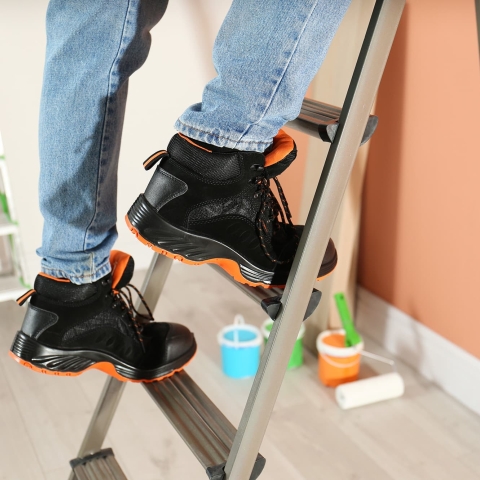Ladder Safety: Protecting Yourself and Your Loved Ones

Help Reduce the Risk of Accidents and Injuries in Your Home
Ladders are everyday tools that can help make countless home tasks more accessible and achievable. Yet, what may seem like a simple climb can sometimes hide a world of potential hazards.
Here are some essential ladder safety tips to help ensure the well-being of you and your family.
Choosing the Right Ladder
Selecting the appropriate ladder for the task is crucial. Different jobs require different types of ladders, such as stepladders, extension ladders, or platform ladders. Make sure the ladder you choose is suitable for your needs and is in good condition.
Read and Follow Manufacturer Guidelines
Make sure you carefully review and follow the manufacturer's guidelines and warning labels when using the ladder.
Inspect Your Ladder
Before every use, inspect the ladder for visible defects or damage. Look for cracks, missing rungs, or loose hardware. If you notice any issues, don’t use the ladder until it is repaired or replaced.
Proper Setup
Ensure the ladder is on a stable and level surface when setting it up at home. For uneven terrain, consider using ladder levelers or leg extensions. Always extend the ladder to the recommended height and lock it securely in place.
Maintain Three Points of Contact
When climbing up or down a ladder, maintain three points of contact - two hands and one foot, or two feet and one hand. This provides stability and minimizes the risk of falling.
Face the Ladder
Always face the ladder while ascending or descending. Avoid overreaching or leaning to the side, as this can make the ladder unsteady.
Stay Centered
Keep your body centered between the ladder's side rails and avoid leaning too far in any direction. Reaching too far to one side can cause the ladder to tip over.
Using Tools Securely
If you need to use tools or equipment while on the ladder, make sure they are secure and within easy reach. Use tool belts or holsters to keep your hands free for climbing.
Emergency Preparedness
Have a plan in case of emergencies. In the event of an accident or fall, know how to respond, including calling for medical assistance if necessary.
By following these fundamental ladder safety guidelines, you can help reduce the risk of accidents and injuries in your home. Prioritizing safety is essential for protecting yourself and your loved ones.
Sources: OSHA, NIOSH
The information presented in this document is for informational and educational purposes only. It is intended to assist individuals, farmers, and business owners in identifying common hazards/risks and considering proactive loss prevention or loss mitigation actions. For information related to specific loss hazards, please contact your insurance agent.

